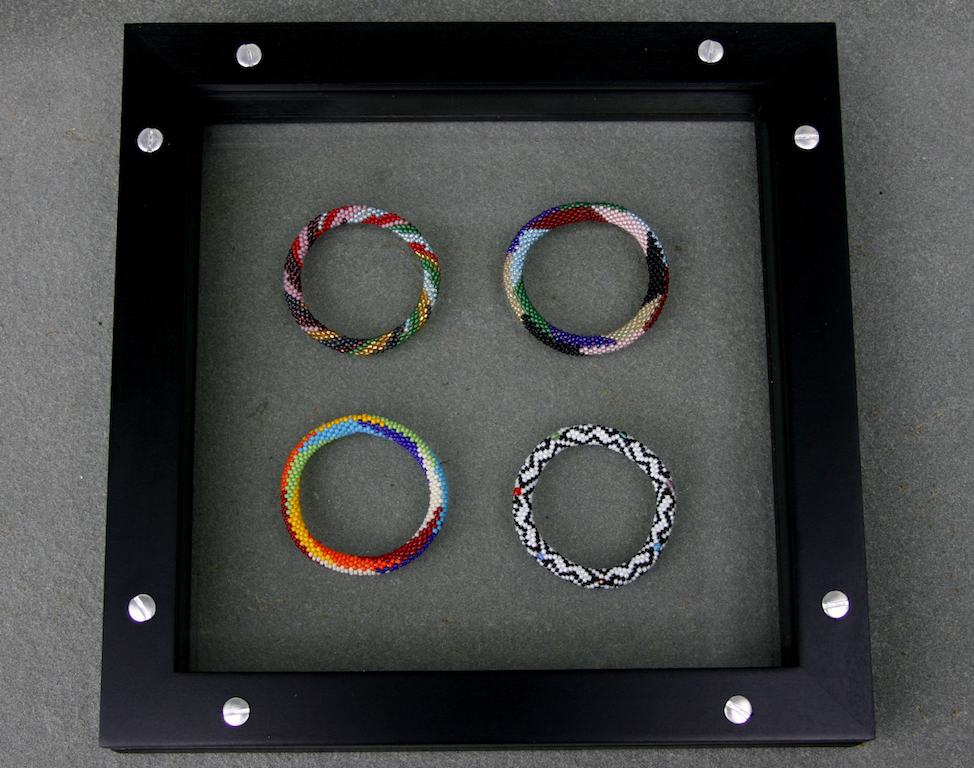Seven-Color Torus Series in Bead-Crochet
Sophie Sommer, Susan Goldstine, and Ellie Baker
Glass beads, thread
2009
Joint Mathematics Meetings Exhibition of Mathematical Art, Boston, January 2012

The Four-Color Theorem states that any map drawn in the Euclidean plane or on the sphere can be colored with only four colors in such a way that no two adjacent countries are the same color. This result, originally conjectured in 1852, has a colorful and controversial history commensurate with the remarkable difficulty of proving it. On the other hand, it is quite easy to demonstrate that up to four colors are necessary by drawing a map with four countries, each of which touches all of the others.
On other surfaces, more colors may be required. For instance, on a torus (a doughnut-shaped surface), we have the Seven-Color Theorem. The first three bracelets here show that seven colors are necessary by exhibiting maps with seven countries, each of which touch all the others. The fourth bracelet, in the lower right, shows the dual of the seven-country map, a complete graph with seven nodes and non-crossing edges: impossible in the plane, but possible on the torus.
These bracelets were inspired by Norton Starr’s seven-color torus map in painted hydrostone, Carolyn Yackel’s seven-color torus map in crocheted yarn, and sarah-marie belcastro’s complete graph on seven vertices on a torus in knitted yarn. The patterns are chronologically ordered from left to right and top to bottom, and they reflect our developing understanding of bead-crochet torus design.
To see more about the underlying mathematics and the art of bead crochet, look at Chapter 2 of Crafting Conundrums: Puzzles and Patterns for the Bead Crochet Artist by Ellie Baker and Susan Goldstine.